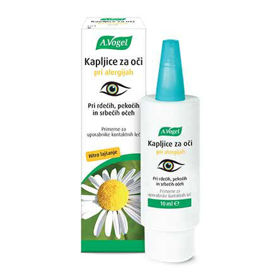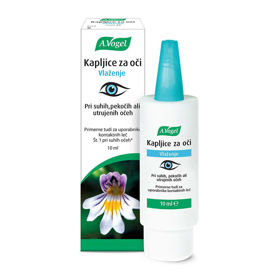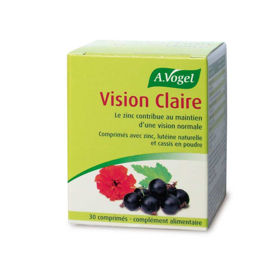Vprašanje stranke:
Kako zdraviti vnetje oči pri otroku? Vprašanje anonimne stranke
Odgovor farmacevta:
Vnetje oči pri otroku, pogosto imenovano konjunktivitis ali vnetje očesne veznice, je lahko povzročeno z različnimi dejavniki, vključno z bakterijami, virusi, alergijami ali dražečimi snovmi. Zdravljenje je odvisno predvsem od vzroka vnetja.
Bakterijski konjunktivitis
Simptomi:
- gnojni izcedek,
- rdečina,
- otekanje,
- zlepljene veke, še posebej zjutraj.
Zdravljenje:
- Obiščite zdravnika za diagnozo in predpis antibiotikov, običajno v obliki kapljic ali mazila.
- antibiotike uporabljajte po navodilih zdravnika, običajno pa je to od nekaj dni do tedna.
- Pomembna je ustrezna higiena, umivanje rok in izogibanje dotikanju oči.
Virusni konjunktivitis
Simptomi:
- voden izcedek,
- rdečina,
- solzenje,
- prehlad ali okužba zgornjih dihal.
Zdravljenje:
- Specifičnega zdravila ni, saj virusne okužbe običajno minejo same od sebe v enem do dveh tednih.
- Za lajšanje simptomov lahko uporabite tople obkladke.
- Pomembna je higiena, saj se virusne okužbe zlahka širijo.
Alergijski konjunktivitis
Simptomi:
- srbenje,
- rdečina,
- solzenje,
- otekanje, pogosto sezonsko.
Zdravljenje:
- Izogibajte se alergenom (npr. cvetni prah, prah, živalska dlaka).
- Uporabite antihistaminike ali antialergijske kapljice za oči, ki jih ponavadi predpiše zdravnik.
- Hladni obkladki lahko pomagajo zmanjšati otekanje in srbenje.
Dražeči konjunktivitis
Simptomi:
- rdečina,
- solzenje,
- draženje, običajno zaradi stika z dražečimi snovmi (npr. dim, klor iz bazena).
Zdravljenje:
- Izperite otrokove oči s sterilno fiziološko raztopino.
- Izogibajte se dražečim snovem.
- Simptomi običajno izzvenijo sami po sebi, ko se odstranijo dražilci.
Splošni nasveti za nego oči
- Higiena: pogosto umivajte roke in naučite otroke, da se svojih oči ne dotikajo.
- Obkladki: tople ali hladne obkladke (odvisno od vrste konjunktivitisa) lahko uporabite za lajšanje nelagodja. Tople obkladke za bakterijske in virusne okužbe, hladne za alergijske reakcije.
- Čiščenje izcedka: nežno čistite izcedek okoli oči z vlažno in čisto krpico ali gazo. Vsakič uporabite svežo krpico ali gazo, da preprečite širjenje okužbe.
- Ločeni osebni predmeti: uporabljajte ločene brisače in posteljnino za otroka, da preprečite širjenje okužbe na druge družinske člane.
Vnetje oči pri otroku je pogosto in običajno ni resno, vendar je pomembno, da se pravilno diagnosticira in zdravi glede na vzrok. Redna higiena, pravilna nega in po potrebi obisk zdravnika so ključni za hitro in učinkovito zdravljenje.
Ali je vnetje očesa pri otroku pogosto?
Vnetje očesa pri otroku, zlasti konjunktivitis, je precej pogosto. Otroci so pogosto izpostavljeni različnim patogenom in alergenom, kar lahko pogosto vodi do vnetja oči. Otroci pogosto prihajajo v stik z bakterijami in virusi, ki lahko povzročijo konjunktivitis, poleg tega pa imajo pogosto slabše higienske navade, zaradi česar se lahko okužijo z dotikanjem oči z umazanimi rokami.
Alergije so pri otrocih prav tako pogoste in lahko povzročijo alergijski konjunktivitis. Dražeče snovi, kot so klor v bazenih ali dim, lahko povzročijo vnetje oči pri otrocih. Konjunktivitis je ena najpogostejših očesnih težav pri otrocih, še posebej pri tistih v šolah in vrtcih, kjer je tesen stik z drugimi otroki in skupna uporaba predmetov pogosta. Sezonske alergije lahko povečajo pojavnost alergijskega konjunktivitisa pri otrocih.
Kako dolgo traja vnetje oči pri otroku?
Trajanje vnetja oči pri otroku je odvisno od vzroka vnetja. Bakterijski konjunktivitis se običajno zdravi z antibiotiki in se simptomi izboljšajo že v nekaj dneh. Virusni konjunktivitis lahko traja nekaj dni do enega ali dveh tednov in običajno mine sam od sebe. Alergijski konjunktivitis se lahko pojavlja občasno in je odvisen predvsem od izpostavljenosti alergenom. Trajanje vnetja oči se lahko razlikuje glede na resnost in specifične okoliščine vsakega primera. Pri trajnejših ali ponavljajočih se primerih je priporočljivo posvetovanje z zdravnikom.
Kaj povzroči vneto oko pri otrocih?
Vneto oko pri otrocih je lahko posledica različnih vzrokov, vključno z naštetimi:
- Bakterijska okužba: najpogostejši vzrok bakterijskega konjunktivitisa je okužba z bakterijami, kot so Staphylococcus aureus, Streptococcus pneumoniae ali Haemophilus influenzae. Bakterije se pogosto prenašajo z neposrednim stikom z okuženimi rokami ali predmeti.
- Virusna okužba: virusni konjunktivitis je pogosto povezan z virusi, ki povzročajo prehlade ali druge okužbe dihal. Virus se lahko prenaša s kapljicami izcedka iz nosu ali grla, ki nato pridejo v stik z očmi.
- Alergije: alergijski konjunktivitis je posledica preobčutljivosti na določene alergene, kot so cvetni prah, prah, živalska dlaka ali določena živila. Vnetje oči lahko sprožijo tudi dražilne snovi v okolju, kot so dim, klor v bazenu ali kemikalije.
- Draženje: pogosto draženje oči pri otrocih lahko povzroči vnetje, na primer zaradi dolgotrajnega izpostavljanja sončni svetlobi, močnega vetra ali onesnaženega zraka.
- Reakcija na kontaktne leče: pri starejših otrocih, ki morda nosijo kontaktne leče, se lahko pojavijo težave zaradi nepravilne uporabe ali neustreznega vzdrževanja leč.
Zanimivo branje: Bakterijski konjunktivitis
Zanimivo branje: Kaj pomaga za vnete oči








 Facebook
Facebook
 Instagram
Instagram
 info@moja-lekarna.com
info@moja-lekarna.com

